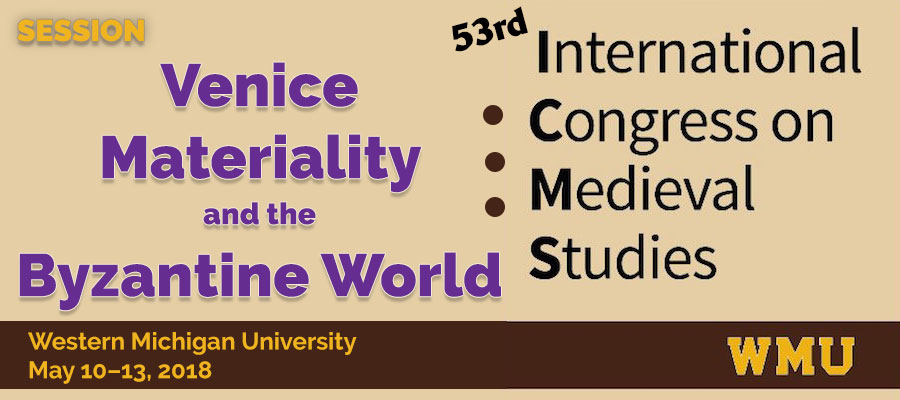Venice, Materiality, and the Byzantine World, 53rd International Congress on Medieval Studies, Western Michigan University, May 10–13, 2018
The Dumbarton Oaks Byzantine Symposium leading to the 2010 publication of San Marco, Byzantium, and the Myths of Venice introduced new perspectives on Byzantine and Venetian visual and material culture that extended Otto Demus’s survey of Saint Mark’s basilica. The authors’ application of more recent approaches—such as the social function of spolia, the act of display, the construction of identity, and cultural hybridity—brought fresh analyses to a complex and richly decorated monument.
This panel seeks to expand this methodological discourse by taking into account questions related to materials, materiality, and intermediality between Venice and Byzantium. The arrival of material culture from the Byzantine world to Venice as gifts, spoils, or ephemera during the centuries surrounding the Fourth Crusade allowed for both appropriation and conceptual transformation of material culture. In light of the renewal in interest of Venice’s Byzantine heritage, this panel seeks to reflect on the interaction of material culture between la Serenissima and the Byzantine world, especially during the eleventh through fifteenth centuries.
Topics may be wide-ranging, including, but not limited to issues of reception and cultural translation; changing concepts of preciousness; different valuation of materials between Venice and Byzantium; the fluctuating simulation of material visual effects; the transformation of Byzantine objects incorporated into Venetian frames; intermedial dialogue between Byzantine and Venetian art; and the process and technique of manufacture of works between Byzantium and Venice.
Some points of departure may include the building of San Marco itself; Byzantine objects in the Treasury; Byzantine manuscripts included as part of the Cardinal Bessarion gift to the Republic; the monuments on Torcello; or issues raised as a result of recent conservation projects.
New cross-cultural methodologies from art historical, anthropological, or sociological fields are welcome.
Session Organizers
Brad Hostetler, Kenyon College
Joseph Kopta, Pratt Institute
Sponsored by the Italian Art Society
